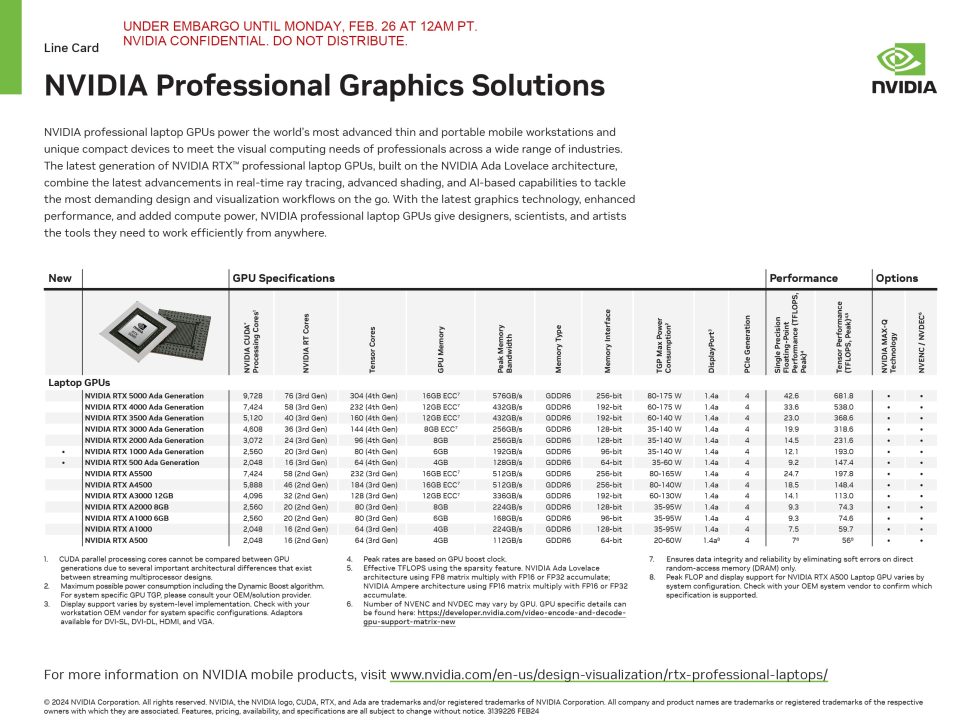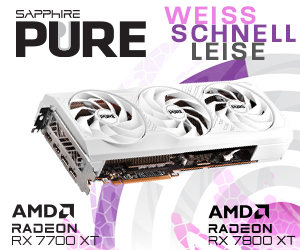Laptops need more and more power to perform more intensive tasks. Especially when you’re on the go to get your work done, it can sometimes get very heavy and tiring. Thanks to generative AI and hybrid work environments, such tasks can be handled better and better and with NVIDIA’s new 500 and 1000 RTX laptop GPUs, it should get even better.

Accordingly, NVIDIA is introducing its new RTX 500 and RTX 1000, which are based on the Ada Lovelace architecture and are installed in portable workstations. The two new laptops contain an NPU, i.e. a component of the CPU, and the NVIDIA RTX GPU, which contains tensor cores and is responsible for the AI processes.
For example, the new RTX 500 GPU offers 14x generative AI performance for models such as Stable Diffusion, 3x faster photo processing speed with AI, 10x faster 3D rendering, but other features are also included. With the RTX 500 and 1000, it is also possible to remove distracting background noise from videos thanks to AI. Blurred images can be upscaled and result in a more beautiful picture, but you also get better quality for video conferencing or streaming.
If that’s not enough and you’re looking for an AI that can do even more advanced rendering, data science and deep learning, you can of course also use NVIDIA’s mobile RTX 2000, 3000, 3500, 4000 and 5000 of the Ada generation. This gives 3D creators, for example, the opportunity to visualize photorealistic rendering in real time. Companies can implement and query their internal knowledge in a chatbot and scientists can focus more on AI training and customization, project development and data science.
In the list you will find the TOPS of the individual GPUs and their technical data. The higher the TOPS, the higher the fire range of general AI tasks is possible.

The two new GPUs offer the latest functions for laptops. This includes the third generation of RT cores, which offer 2x better ray tracing performance, the fourth generation of tensor cores, which enable better deep learning training, AI workloads and better inferencing, the ADA generation CUDA cores, which realize up to 30% more single-precision floating point, and dedicated GPU memory, which is 4GB on the RTX 500 and 6GB on the RTX 1000, allowing users to run demanding 3D and AI-based applications, enabling them to tackle larger projects, datasets and multi-app workflows.
In addition, there is also DLSS 3, which improves AI-supported graphics by generating high-quality frames, and the A1 Encoder. This is 40% more efficient than H.264 and offers new possibilities for broadcasting, streaming and video conferencing. As you can see, there are some neat features that can make work easier and more efficient. The products are expected to be released this spring for mobile workstations by their partners Dell Technologies, HP, Lenovo and MSI.
The information was provided by NVIDIA in advance. The only condition was compliance with the embargo period on February 26, 2024 at 9:00 a.m.
Source: NVIDIA































1 Antwort
Kommentar
Lade neue Kommentare
Mitglied
Alle Kommentare lesen unter igor´sLAB Community →